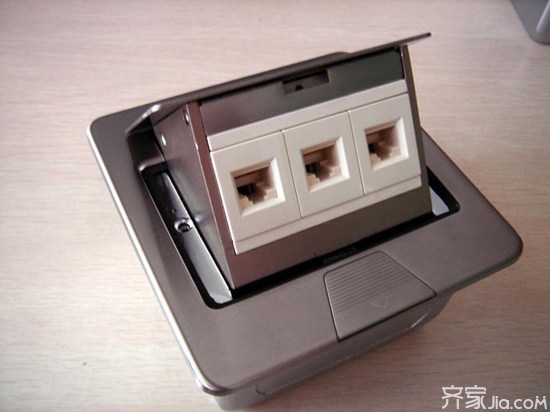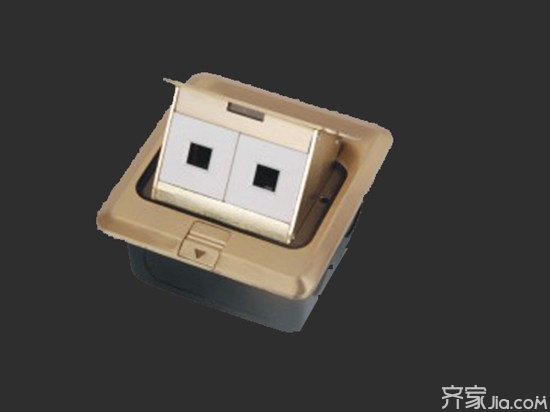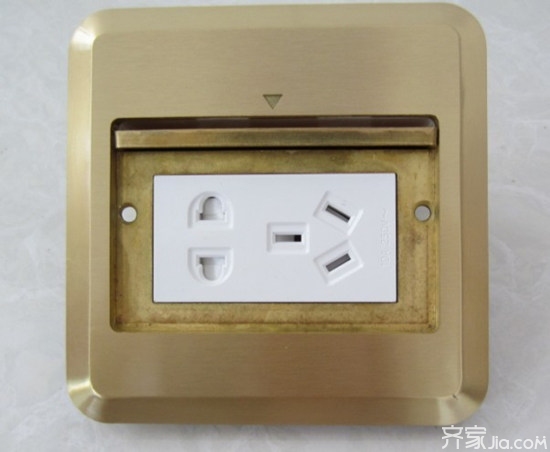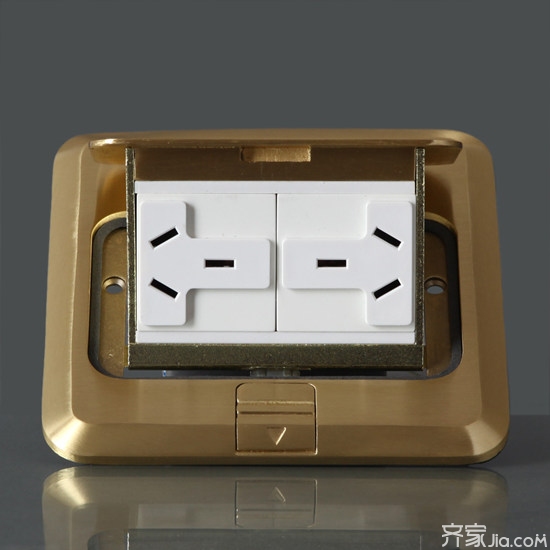Ground socket installation details to enjoy the convenience of life
Ground sockets are sockets installed on the ground. They are generally used in offices, airports, hotels, etc. In this issue, Xiao Bian will introduce you to the installation methods of ground sockets.
First, the installation of embedded ground socket
This mounting method is applicable to the case where the ground floor is a concrete casting place for a flip type, an eject type, and a screw type ground socket.

1. Ground socket steel bottom box installation
(1) Positioning of steel bottom boxes
According to the construction drawings, the installation position of the steel bottom box is determined, and the steel bottom box is connected with a metal wire pipe, and the degree of coagulation is cast around and fixed. When necessary, the theodolite can be used to correct and position the steel bottom box of the same column that needs to be embedded.
(2) buried depth
First, according to the requirements of the design drawings, a pre-embedded steel bottom box with an appropriate thickness should be selected, and then embedded according to the structure of the ground and floors. The upper end of the general steel bottom box should be kept at a depth of +/- 3-5 mm below the ground plane, and then cast around it to set the degree of coagulation.
(3) Selection of thickness of steel bottom box
a. When the embedded depth is between the ground leveling layer and the decorative layer, and the buried depth requirement is less than 55mm, the ultra-thin steel bottom box can be selected.
b. The pre-embedded steel bottom box with a thickness of 65-75mm can be used for the embedded depth from the floor reinforcement structure to the decorative layer.
(4) Precautions
Before the steel bottom box is fixed in the cast concrete, it should be confirmed that the steel bottom box and the metal wire tube are well grounded, and at the same time, the protective upper cover of the steel bottom box is covered to prevent dust and debris from falling during construction.
2. Installation of ground socket cover

The installation work of the upper cover should be performed after the floor decoration layer is completed and dried.
(1) Cleaning up the site
First remove the protective cover on the bottom box of the steel and clean the dirt and debris around the installation hole. After the upper cover is installed, good contact with the floor surface can be achieved.
(2) Antiseptic treatment
Decorative materials of the floor decoration layer, such as marble, porcelain tiles, and improperly proportioned concrete materials, may cause pan-alkali reaction if not fully dried, and will have a strong corrosive effect on the upper cover of the ground socket. Therefore, under the condition that the concrete around the hole of the ground socket has not been completely dried, the upper cover cannot be installed temporarily. Before installing the upper cover, it is best to brush one or two layers of anti-corrosion paint around the hole to avoid corrosion caused by the ubiquitous reaction to the upper cover.
(3) Grounding
When installing a ground socket that contains a strong electrical outlet, the ground connection of the cover must be reliably connected to the back box.
(4) Fixing the cover
Fasten the top cover and bottom case with screws.
Second, the installation of floor-type ground socket
This installation method is suitable for floor type ground sockets where the ground floor is an overhead anti-static floor.

1. Ground socket steel bottom box installation
(1) Positioning of steel bottom boxes
According to the construction drawings, open square holes on the anti-static floorboards that need ground sockets. The hole size should be 5mm larger than the actual size of the steel bottom box.
(2) Installation depth
In order to ensure that the cover can maintain good contact with the floor, the upper end of the steel bottom box should be 3-5mm lower than the floor surface. Anti-static floorboards with different thicknesses can be adjusted for mounting depth by adding or removing spacers between the mounting corners on the steel bottom box and the bottom of the antistatic floor block.
(3) Fixing of steel bottom box
Knock out the knock-out holes on the steel bottom box to be threaded and connect them with snake skin joints. Then use the self-tapping screws to fix the corners on the steel bottom box on the anti-static floor.
2. Installation of ground socket cover

(1) Clean up the site
First clean and wipe around the floor hole.
(2) Grounding
When installing a ground socket with a strong electrical socket, the ground connection of the cover must be reliably connected to the steel back box.
(3) Fixed
Fasten the upper cover to the steel bottom box with screws.
The ground socket cover has a certain decorative effect on the ground, so we must install the cover on the ground when installing the ground socket, so as to ensure that the cover is not damaged.
Switch Switch Socket Switch Socket Mount Switch Socket Optional Switch Socket Brand
Acid Dyes
An acid dye is a dye which is a salt of a sulfuric, carboxylic or phenolic organic acid. The salts are often sodium or ammonium salts. Acid dyes are typically soluble in water and possess affinity for amphoteric fibers while lacking direct dyes' affinity for cellulose fibers. When dyeing, ionic bonding with fiber cationic sites accounts for fixation of colored anions in the dyed material. Acids are added to dyeing baths to increase the number of protonated amino-groups in fibers.
Some acid dyes are used as food colorants.
Acid Dyes
Acid Orange,Acid Black 194,Acid Black 210,Acid Dyes Acid Red
FORING IMPORT & EXPORT CO.,LTD , https://www.foringfor.cn